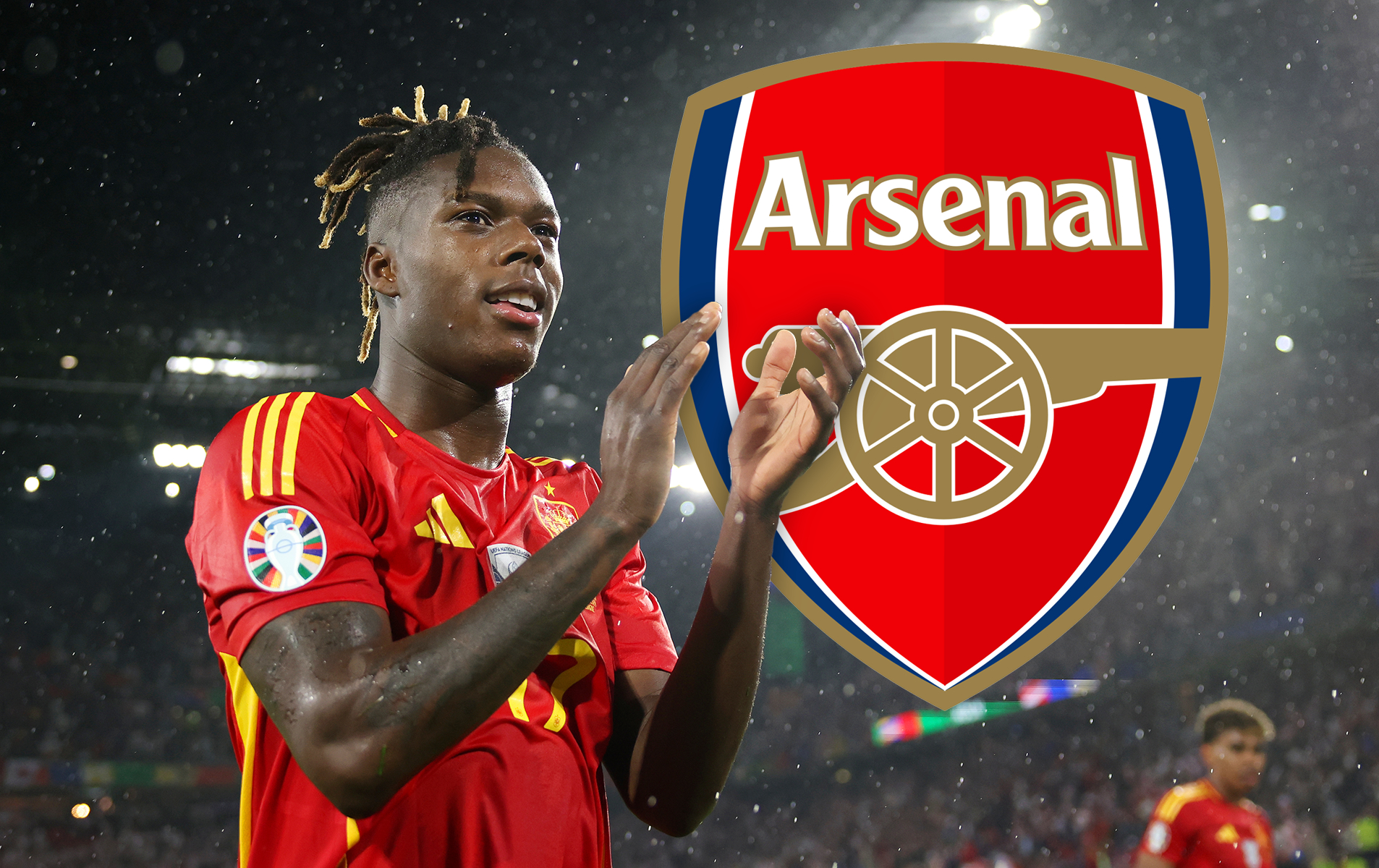What happened to football on Christmas Day? The lost history of a Victorian tradition
Football was once as much of a Christmas Day staple as the Queen's speech and pigs in blankets; but was it all festive fun or just a freezing farce? Paul Brown dons his silly hat...
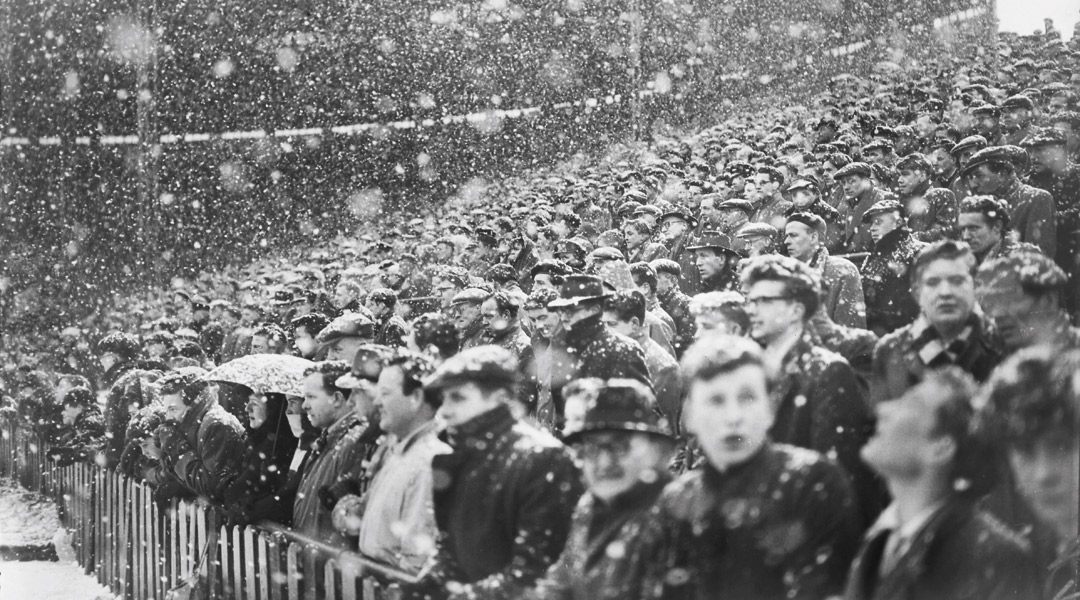
For football fans, the Christmas period serves up a real festive feast, with fixtures stuffed into the calendar like sage and onion into a turkey’s nether regions. Christmas Day, however, is a football-free zone, with supporters left to sit indoors and endure the Queen’s speech, cracker jokes and kisses from elderly relatives.
This wasn’t always the case, though – up until the 1950s, football was traditionally played on Christmas Day. It made a lot of sense, particularly in the early years.
Christmas Day was a rare public holiday, and football was one of the few entertainments available. In the days before television, it wasn’t possible to slump on the sofa in front of the EastEnders Christmas special, so folk wrapped up in new hats and scarves from Santa Claus and went out to watch football instead.
There would be a full programme of fixtures on Christmas Day and, usually, another full programme on Boxing Day. In the Victorian era, when many of the festive traditions we enjoy today were introduced, football was very much a part of Christmas.
Two days, three games
In 1888, Everton played two matches on Christmas Day, then another on Boxing Day. All three matches took place at Everton’s pre-Goodison home – Anfield. On Christmas morning they played a Lancashire Cup tie against Blackburn Park Road, coming from behind to win 3-2. Then in the afternoon, they played an annual exhibition match against Ulster FC, winning 3-0, with goalkeeper Charles Jolliffe scoring the third goal to the great amusement of the 2,000 spectators – a large crowd for the time. The Boxing Day match against Bootle was less amusing, being played in a shower of hailstones, and ending as a goalless draw.
In 1888, Everton played two matches on Christmas Day, then another on Boxing Day
The first Football League match to be played on Christmas Day was Preston North End versus Aston Villa in 1889. Preston’s 'Invincibles' were the reigning league champions, but Villa had won the previous meeting between England’s top two sides. This was a real Christmas cracker and 9,000 spectators postponed their turkey dinners to see it, making it one of the highest-attended games the fledgling league had seen.
Man of the match was Preston’s Nick Ross, the fearsome defender-turned-forward who terrified opponents by hissing at them through a crooked set of rotten teeth. Ross gave Preston an early lead, but Villa hit back with two goals before half-time. In the second half, Ross hit a long-range equaliser and then claimed his hat-trick with a “lightning shot”. A hard-fought game ended 3-2 to Preston, who went on to win the league for the second season running.

Clubs often played derby matches on Christmas Day, and one of football’s biggest early derbies was Blackburn Rovers versus Darwen. In 1890, a match between the sides at Ewood Park ended in a Christmas Day riot, with very little seasonal goodwill on display.
Rovers, saving their best players for a Boxing Day match at Wolves, fielded a reserve side. An aggrieved Darwen initially refused to play, before eventually offering up their own scratch XI. At this point, several thousand short-changed supporters of both sides united to show their displeasure. “The impatient crowd burst on the field, smashed the goalposts, and damaged the stands,” reported the Birmingham Daily Post. “No game took place, therefore.”
Get FourFourTwo Newsletter
The best features, fun and footballing quizzes, straight to your inbox every week.
As the Football League expanded, clubs began to travel longer distances for Christmas Day matches. There was no public transport shutdown, so fans and players could take trains and buses for festive away trips. It was customary to play return matches on Christmas Day and Boxing Day against the same opponent, to ensure that paired-up teams had equal distances to travel.
In 1908, the return matches produced a series of mirrored results. For example, Manchester City beat Chelsea 2-1 on Christmas Day, and Chelsea beat City 2-1 on Boxing Day. And Bristol City beat Bradford City 1-0, then Bradford City beat Bristol City 1-0. “Form counts for little in these games,” said The Times ahead of one Christmas programme. “Injuries and general strain play an important part, and the happiest team is that which has the strongest reserves.”
A matter of life and death
In 1909, a Christmas Day match between Partick Thistle and Hibernian ended in tragedy when Hibs and Scotland defender James Main suffered a fatal injury. Partick’s Firhill pitch was covered in ice, and Main told colleagues they were “risking life and limb” by playing on the treacherous surface.
Just before half-time, he was involved in an accidental slippery clash with Partick’s Frank Branscombe, and was carried from the pitch with severe bruising and stud-marks on his stomach. The depleted Hibs eventually lost 3-1. Main went home, but was later rushed to hospital, where it was discovered that he had a ruptured bowel. An emergency operation couldn’t save him, and he died on the following day.
Branscombe was carried from the pitch with severe bruising and stud-marks on his stomach. An emergency operation couldn’t save him
The most famous Christmas Day football match took place in 1914, when one of the deadliest conflicts in human history was paused for a kickabout. The First World War 'Christmas Truce' saw around 100,000 troops along the Western Front exchange gifts, sing carols, and play football. The match has attained mythical status, but letters from soldiers provide evidence that it did take place. A recently-uncovered letter written by Staff Sergeant Clement Barker of the 1st Battalion Grenadier Guards explains how the match started.
“A German looked over the trench – no shots,” he wrote. “Our men did the same, and then a few of our men went out and brought the dead in (69) and buried them. The next thing, a football [was] kicked out of our trenches and Germans and English played football.” Sergeant Barker survived the war, but more than 16 million soldiers and civilians were killed.
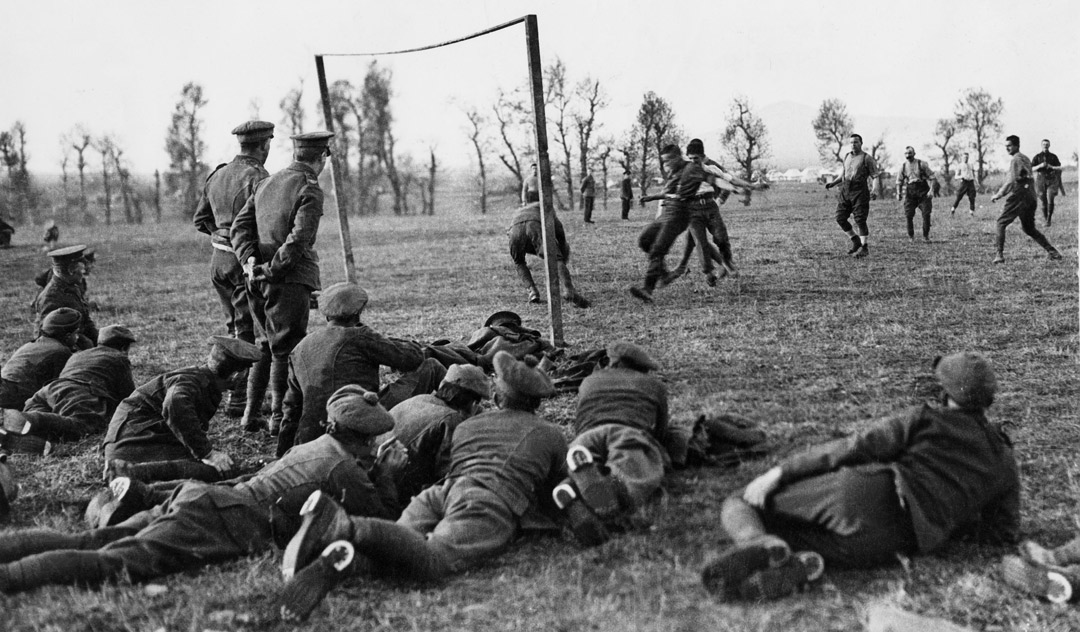
The suspension of league football and the absence of players during the First World War led to the emergence of several women’s teams, the most popular of which was Dick, Kerr’s Ladies – who played their first match on Christmas Day 1917. Festive celebrations were understandably muted, with friends and loved ones fighting abroad, but it was felt that a Yuletide football match could provide spectators with a much-needed boost, and raise money for charity.
The players, led by captain Alice Kell, were wartime munitions girls who worked at a Preston factory owned by Messrs Dick and Kerr. The match was played at Deepdale against Coulthard’s factory, and Dick, Kerr’s won 4-0. “Their forward work was often surprisingly good,” reported the Daily Post. “One or two of the ladies showing quite admirable ball control.” Ten thousand fans watched the Christmas spectacle, raising £488 for a local hospital.
Playing football on a religious holiday was a contentious issue at a time when Sunday football was still banned, and some footballers abstained from playing in Christmas Day matches. Participation was actually voluntary, with FA rules at the time stating that “no club shall be compelled to play any match on Good Friday or Christmas Day”. Star players, like England internationals Arthur Bridgett of Sunderland and Harold Fleming of Swindon, refused to play on religious grounds.
And, up until 1925, the entire Arsenal team were prevented from playing Christmas Day matches on their own religious ground. The land Highbury was built on was owned by St John's College of Divinity, and the terms of Arsenal’s lease prohibited them from playing matches on religious holidays. But Arsenal bought the land in 1925, and at 11.15am that Christmas morning they played their first Christmas Day match, against Notts County, in front of 33,500 fans. Arsenal won 3-0, with Charlie Buchan among the scorers.
Foggy heads
The busy festive fixture list proved extremely lucrative for clubs, but wasn’t so popular with players. Many were committed drinkers, and unable to resist seasonal excesses. Some clubs even provided their players with booze as a Christmas treat.
Clapton Orient striker Ted Crawford, later a popular manager and raconteur, recalled his entire team turning up drunk for a Christmas Day match against Bournemouth in 1931 courtesy of a barrel of beer provided by their manager. Crawford was unable to see straight and ended up collapsing on the pitch in a sozzled heap. Clapton (now Leyton) Orient lost 2-1, but sobered up sufficiently to win the Boxing Day return match 1-0.
Clapton Orient striker Ted Crawford was unable to see straight and ended up collapsing on the pitch in a sozzled heap
On Christmas Day 1937, it was fog rather than alcohol that hung over football. Britain was covered in a thick grey blanket, forcing many league games to be postponed or abandoned. The game between Chelsea and Charlton at Stamford Bridge went ahead, and both sides scored a goal, but in the second half the fog thickened and Charlton keeper Sam Bartram began to lose sight of his team-mates. “We were on top at this time,” he remembered in his autobiography, “and I saw fewer and fewer figures as we attacked steadily.”
Bartram paced up and down his goal-line, assuming that his side had the opposition pinned in their own half. After several lonely minutes, a figure emerged from the fog. “What on Earth are you doing here?” enquired a puzzled policeman. “The game was stopped a quarter of an hour ago. The field’s completely empty.” “When I groped my way to the dressing room,” wrote Bartram, “the rest of the Charlton team, already out of the bath and in their civvies, were convulsed with laughter.”
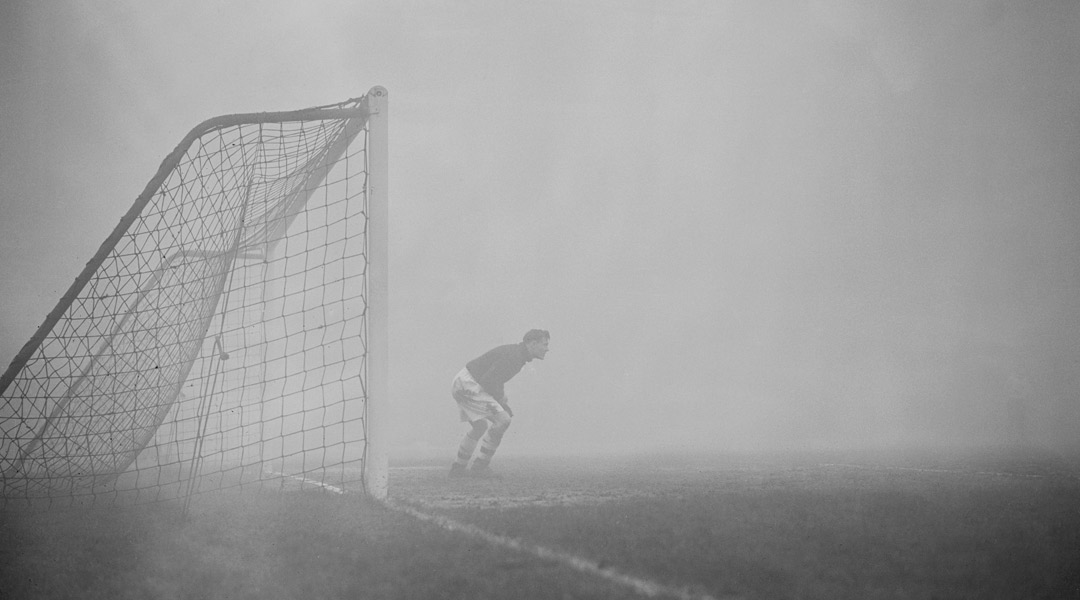
Christmas Day football continued during the Second World War, and delivered a stockingful of goals. On December 25, 1940, Norwich faced a Brighton & Hove Albion team that arrived with only five players – one senior, three juniors and a loanee – and cobbled together an XI using volunteers from the crowd. Norwich won 18-0, with Fred Chadwick scoring six.
The 40 wartime league matches played on Christmas Day 1940 provided 210 goals. Southend beat Clapton Orient 9-3, Bournemouth beat Bristol City 7-1, Mansfield beat Stoke 7-2, and Bury and Halifax drew 5-5.
Several teams played two games that day. Leicester lost 5-2 at Northampton in the morning, then Northampton lost 7-2 at Leicester in the afternoon. With guest players allowed to turn out for different teams, Tommy Lawton played for Everton against Liverpool in the morning, and for Tranmere against Crewe in the afternoon. And Len Shackleton played for Bradford Park Avenue against Leeds in the morning, then scored for Bradford City against Huddersfield in the afternoon.
On December 25 1940, Norwich faced a Brighton team that arrived with only five players and cobbled together an XI using volunteers from the crowd
In 1949, with football at its post-war peak of popularity, almost 3.5 million fans attended the Football League’s Christmas programme of three matches over four days. Bumper crowds were boosted by fans for whom the Christmas Day match was their only game of the season. Christmas match reports from this turnstile-spinning era convey a particularly jovial atmosphere. Fans would join together to sing carols before kick-off, then pass round cigars and share hip flasks of Christmas spirits. Match programmes were adorned with sprigs of holly, and contained season’s greetings from club directors, staff and players.

One strange post-Second World War Christmas football custom involved fans throwing orange peel at players. Oranges were a heavily-rationed luxury, and a popular Christmas gift. “People saved it up in their stockings and brought it to the ground just to chuck it at opposition players,” recalled Manchester United’s Charlie Mitten. “Actually, not just opposition players.”
Festive Europe
It wasn’t only domestic football that was played on Christmas Day. The first match of the inaugural Inter-Cities Fairs Cup tournament, the precursor of the Europa League, was played on December 25, 1955. The sides involved were a Barcelona XI (effectively the Barcelona club side plus one player from Espanyol) and a Copenhagen XI known as Staevnet. Playing at the Camp Nou, Barcelona raced to a 4-0 half-time lead.
Staevnet pulled two goals back in the second half, but Barcelona eventually won 6-2, with the great Laszlo Kubala among the scorers. On the same day, Real Madrid played Partizan Belgrade in the quarter-finals of the first European Cup competition. Real won 4-0, with Alfredo Di Stefano scoring the fourth. Barcelona went on to win the Fairs Cup, and Real Madrid won the European Cup.
Real Madrid played Partizan Belgrade in the quarter-finals of the first European Cup competition, and won 4-0
Several international matches have been played on Christmas Day, most notably in South America where Argentina, Brazil, Ecuador and Paraguay have all played Copa America ties on December 25. In Europe, France played Christmas Day friendlies against Belgium in 1952, 1955 and 1963, losing all three, and also played against Bulgaria in 1957, drawing 2-2. Other sides that have played international matches on Christmas Day include China, South Korea, Israel, Palestine, Ghana and Uzbekistan. Most recently, on December 25, 2012, United Arab Emirates beat Yemen 2-0 in a friendly match in Doha.
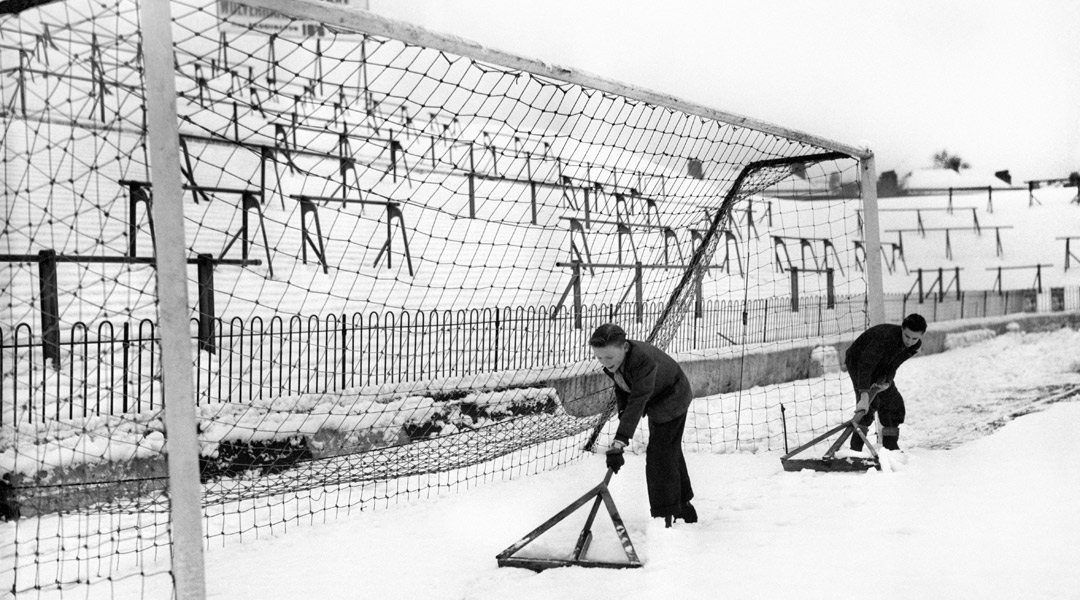
As far as white Christmases go, the Christmas of 1956 was one of the whitest on record. “Officials of Football League clubs are not among those who dream of a white Christmas,” commented The Guardian. However, although bad weather – plus a petrol shortage – kept many spectators at home, all of the Christmas Day fixtures went ahead. 1950s footballers were a hardy breed, and games were played in three inches of snow and driving winds. There was only one submission to the elements – Coventry’s match at Newport was abandoned due to a snowstorm, and the return match on Boxing Day was postponed. The Guardian subsequently referred to the unfortunate Sky Blues as “the club that Santa Claus forgot”.
Christmas Day 1957 was the last with a full league programme. The arrival of floodlights and evening games had removed the need for fixtures to be squeezed into public holidays, and many fans were preferring to stay at home with their families on Christmas Day. In the First Division on December 25, 1957, Blackpool beat Leicester 5-1, Manchester United beat Luton 3-0, and Sheffield Wednesday and Preston drew 4-4. Chelsea beat Portsmouth 7-4, with 17-year-old Jimmy Greaves scoring four for the Blues.
Coventry’s match at Newport was abandoned due to a snowstorm, and the return match postponed. The Guardian subsequently referred them as “the club that Santa Claus forgot”
In 1958 there were only three First Division matches played on December 25, and in 1959 just one. The last English League match played on Christmas Day was Blackpool versus Blackburn in 1965. A crowd of 21,000 turned up to see Blackpool win 4-2. In Scotland, where Christmas Day football wasn’t as big a tradition as it was in England, football was only played when December 25 happened to be a Saturday. The last matches played were Clydebank versus St Mirren (2-2) and Alloa versus Cowdenbeath (2-1) in 1976.
A planned revival of Christmas Day matches failed in 1983. Third Division Brentford had arranged to play Wimbledon at 11am on Christmas morning.
“We hope to revive the old tradition of the husband going to football on Christmas Day while the wives cook the turkey,” said Brentford official Eric White. However, the rather sexist plan backfired, and protests by both sets of fans saw the match brought forward to Christmas Eve. Wimbledon won 4-3.
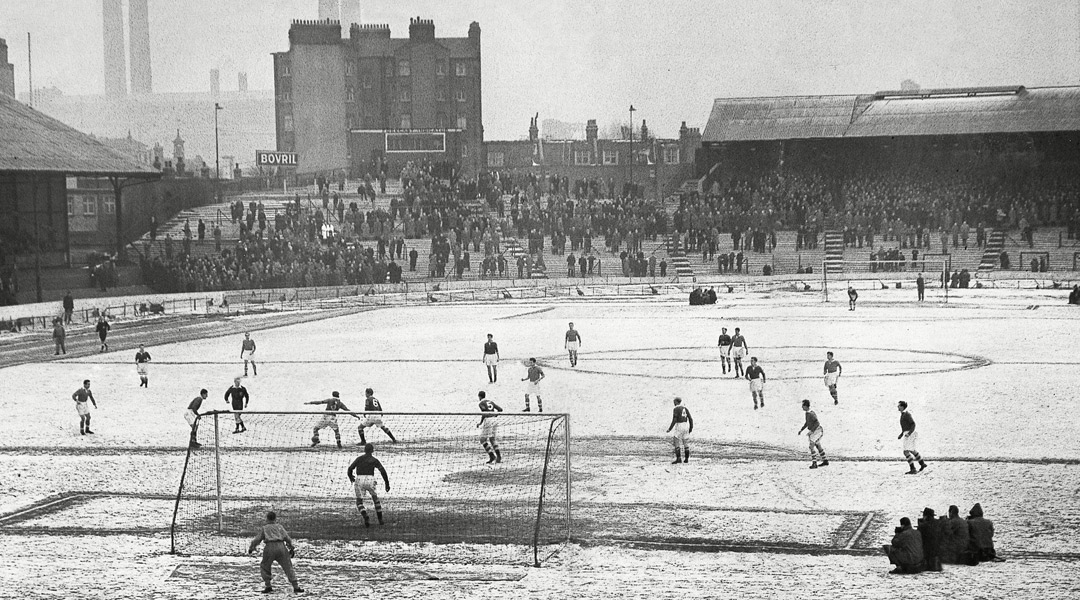
Christmas Day football is still played in Northern Ireland, where the Steel and Sons Cup Final is traditionally held on December 25. The tournament, for intermediate teams, is almost 120 years old, having been founded in the 1890s by Belfast jeweller David Steel. The 2012 final was won by Glentoran II, the Premiership club’s reserve side, who beat Ards 3-0. However, it was subsequently found that the winners had fielded an ineligible player in an earlier round, and they were stripped of the Cup.
The television times
Armchair fans can wallow in football each Christmas now, but before the Premier League era, football rarely appeared in Christmas TV and radio listings.
In 1930, during the early days of radio, the BBC provided a Boxing Day treat in the form of live commentary for the second half of Arsenal versus Manchester City. The sides had drawn 1-1 on Christmas Day at Maine Road, and listeners heard Arsenal win 3-1 at Highbury. The commentator – football’s first – was George Allison, who later became Arsenal manager.
On Boxing Day 1939, fans got to hear a wartime match between Sheffield Wednesday and Chesterfield. Or part of it, anyway – the programme only lasted 30 minutes. The first Christmas match to be broadcast in full was Brentford versus Sheffield United on December 26, 1946. Brentford won 2-1, and live matches soon became a regular feature of Christmas radio listings.
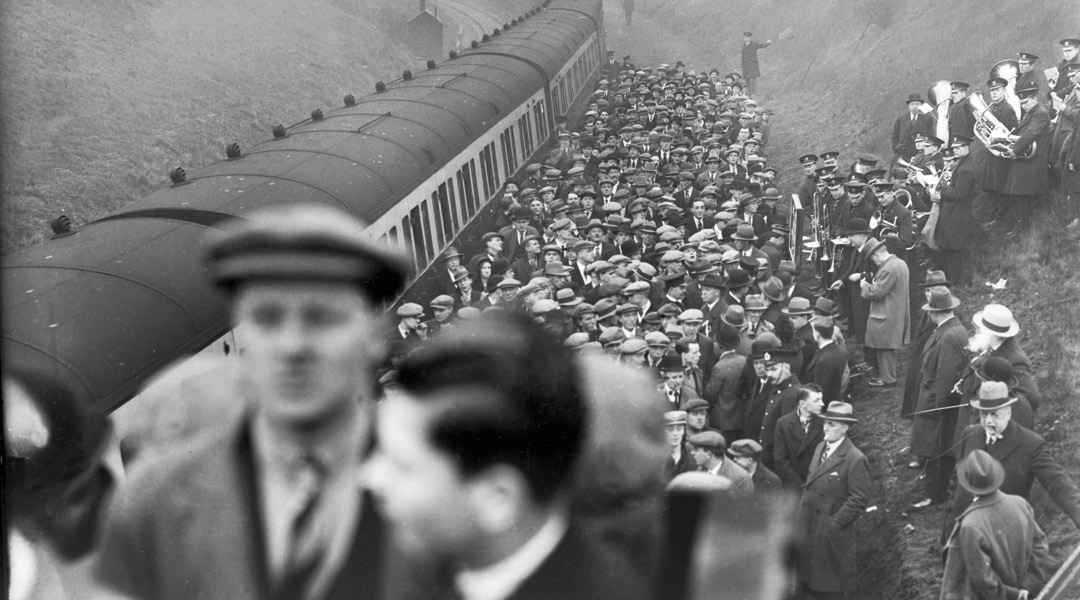
Christmas TV listings, though, remained football-free. Match of the Day began in 1964, but there was no festive edition until Boxing Day 1970. Football fans could watch Football Focus and Final Score during the Christmas holidays but, with Football League Scrooges fearing that TV coverage would reduce lucrative gates, there were no televised matches.
The League finally agreed a TV deal in the mid-1980s, and eventually, on December 27 1988, ITV brought viewers a televised Christmas match – Norwich versus West Ham, live from Carrow Road. Norwich won 2-1, and the commentator was Martin Tyler, who is still commentating on Christmas football almost three decades later.
This feature was originally published in the January 2014 issue of FourFourTwo. Try 3 issues of the magazine now for just £1 or a Christmas Gift Subscription for £54.49!
